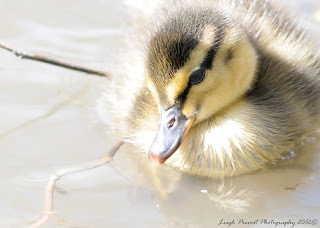Here are some of my favourite shots from today. Please click to see in high resolution.
the wildlife of sussex, a truly spectacular county Please also visit: www.leighprevostphotography.com
Silver-studded Blue

Silver-studded Blue, Iping Common
Monday, 16 April 2012
Arundel
Family day out at Arundel, taking in the Wetlands Centre and town. Non-captive highlights my first House Martin of the year and a number of Cetti's Warblers (heard but not seen unfortunately).
Here are some of my favourite shots from today. Please click to see in high resolution.
Here are some of my favourite shots from today. Please click to see in high resolution.
Saturday, 14 April 2012
Mill Hill, a nationally scarce moth, a fungi that grows out of a caterpillar, and a Black Adder
Popped over to Mill Hill to see if I could catch-up with the Grizzled and Dingy Skippers reported earlier in the week; unfortunately the weather wasn't playing ball so only managed a few sightings when the sun shone through the clouds: 3 Dingy and 2 Grizzled Skipper sightings, though they may well have been the same individuals as never saw more than one at any one time. The Grizzled was looking very fresh. A few ok-ish photos below but as they only ever seem to rest low to the ground, I couldn't avoid the distracting vegetation. How does Neil Hulme manage to get them all so nice and isolated?!
A highlight however was meeting Jake Everitt and finding/learning about a nationally scarce moth (Pancalia sp) and a fungi (Cordyceps gracilis) that grows out of a caterpillar! He also found an Adonis Blue Caterpillar, which was a new one for me.
As I was about to leave I nearly stood on a couple of adders, one brown and one stunning black Adder (both were at the foot of the slope towards the southern-most corner, close to the hedgerow.
As I was about to leave I nearly stood on a couple of adders, one brown and one stunning black Adder (both were at the foot of the slope towards the southern-most corner, close to the hedgerow.
 |
| Dingy Skipper |
 |
| Grizzled Skipper |
 |
| Pancalia sp. the red list one I believe |
 |
| Cordyceps gracilis, a rare parasitic fungi which grows inside the Common Swift Moth Caterpillar (it is buried underground in this image) |
 |
| Adonis Blue Caterpillar (to be confirmed) |
 |
| A gorgeous Black Adder |
 |
| And a Brown one |
Friday, 13 April 2012
Early am up at Cissbury Ring and a Patch tick!
What a morning, glorious sunshine and some great birds to boot. Up at Cissbury Ring early, first birds recorded were a singing Chiffchaff and Willow Warbler close to the steep path heading up to the ring (from the north car park). Up on the ring itself Green Woodpecker, first heard but later seen, a handful of Yellowhammers in song, and a small group of Linnets. On the open ground in the middle of ring, a cracking male and female Wheatear, and what I believe were a small group of Crossbills (flying over and heading north). Then best of all a stunning (and very obiliging) male Ring Ouzel, my first. A few record shots here (). Then to top it off, whilst back at work I was alerted to a strange call up high over the car park. Looking up a small group of gulls were heading south, 4 of which were all white from below, some Mediterranean Gulls, my first for Worthing and another great PAREXEL car park tick!
Sunday, 1 April 2012
Brooklands and around
Took an afternoon walk along the seafront to Brooklands from Worthing Town centre. Highlights included a number of small groups of Sanderling on the retreating tideline, a good number of Turnstone on the groyne opposite Brooklands, and in Brooklands itself Little Grebe and Kingfisher. Please click on image to view full screen.
Turnstone (Arenaria interpres)
Robin (Erithacus rubecula)
Fire on the Downs
Having seen some good reports from Steyning Roundhill over the last few weeks, I thought I'd head up early am to try and see and hopefully photograph Skylark, Corn Bunting, and Yellowhammer. What I did not expect to see was my all time target species, a Firecrest. Having 'twitched' and failed to see a few birds in Sussex recently, I was most surprised to find my own, in the middle of the South Downs. The bird was locating a small patch of scrub just north of where the 2 tracks (leading of the Bostal Road) converge. At first I thought it was a wren but the very prominent eye patch and call (very similar to Goldcrest) without the end florish, gave it away. To top the walk, a very smart male Black Redstart then appeared!
Photos below (please click to view full screen). Hoping to get some better images of the Buntings over the spring months - unfortunately they are difficult birds to get close to to ensure the quality.
Photos below (please click to view full screen). Hoping to get some better images of the Buntings over the spring months - unfortunately they are difficult birds to get close to to ensure the quality.
Subscribe to:
Posts (Atom)

























